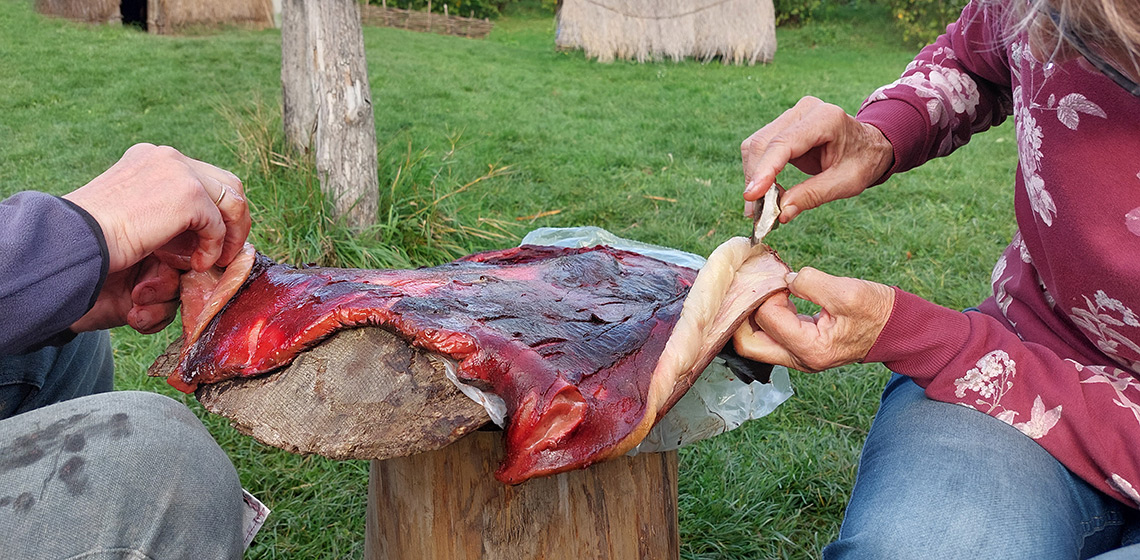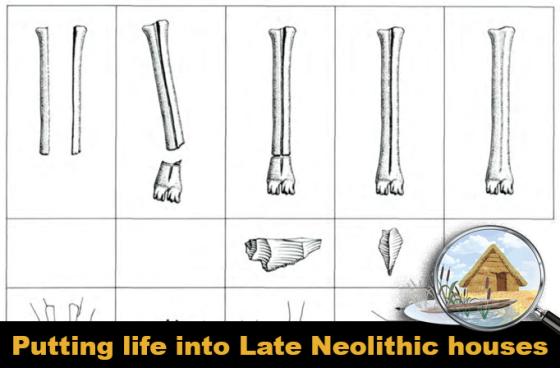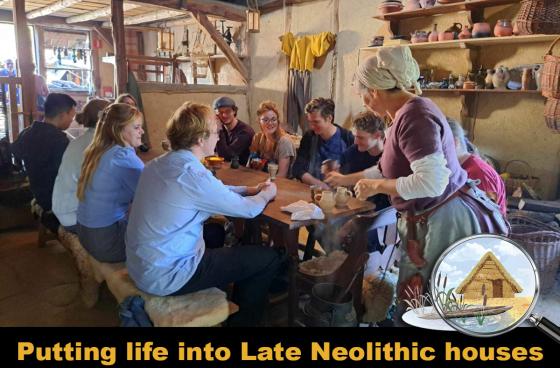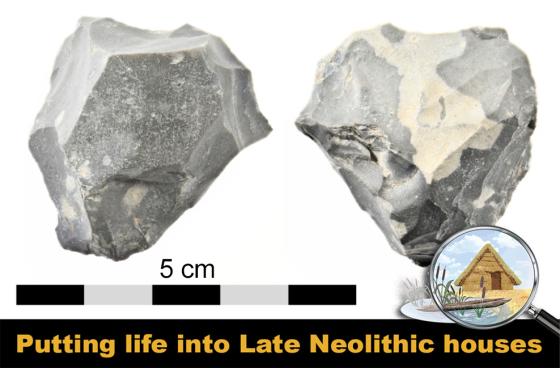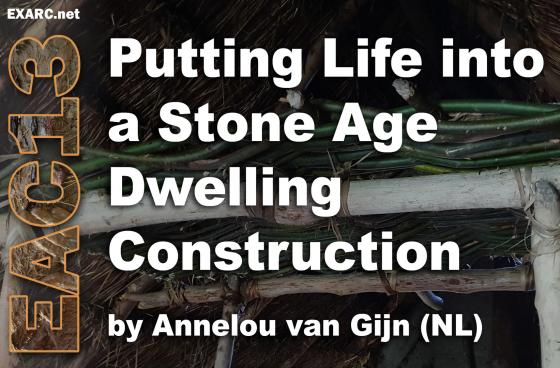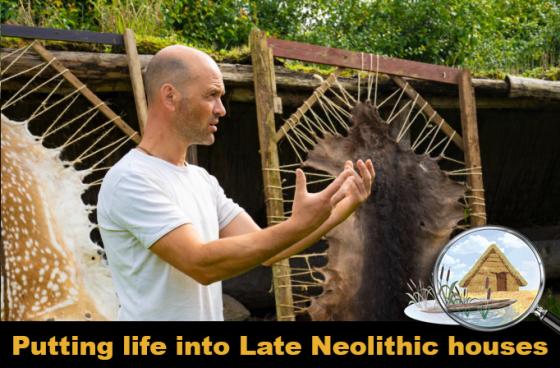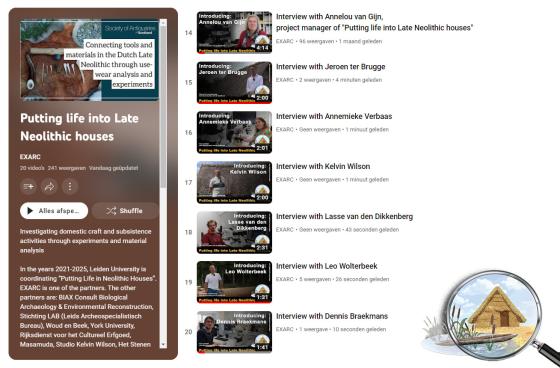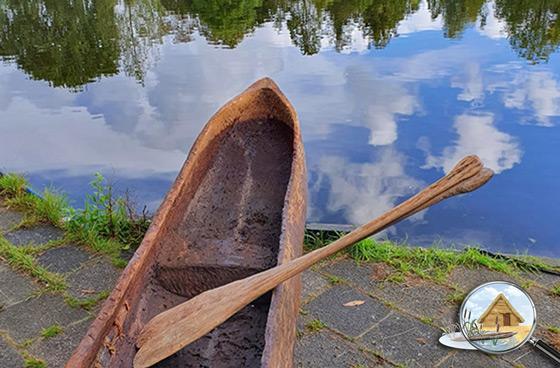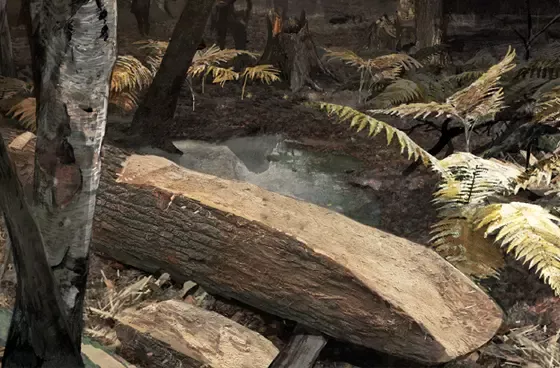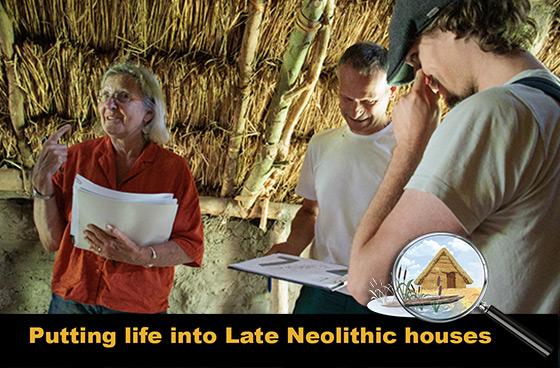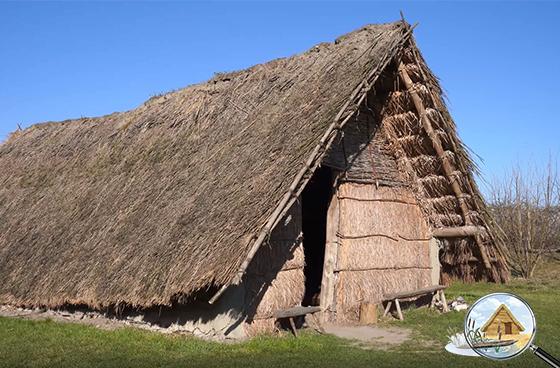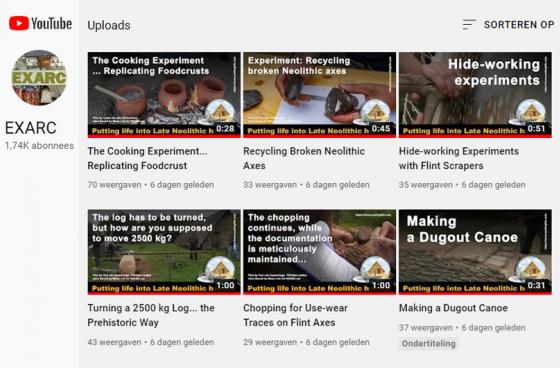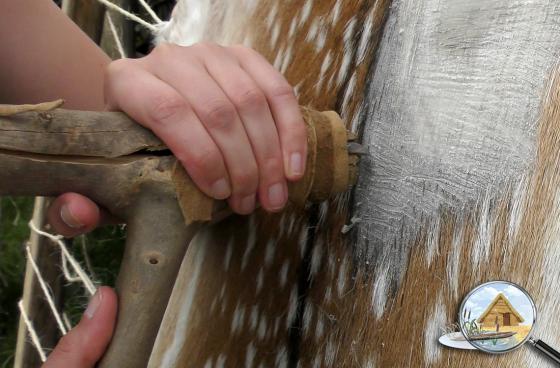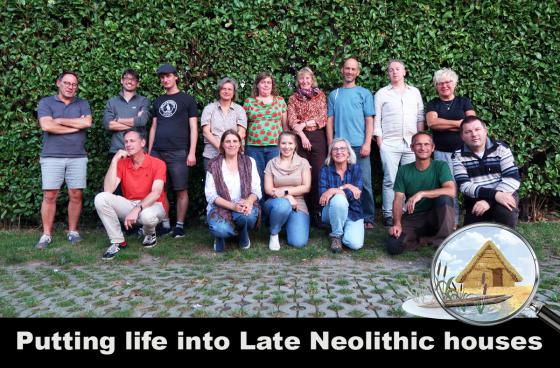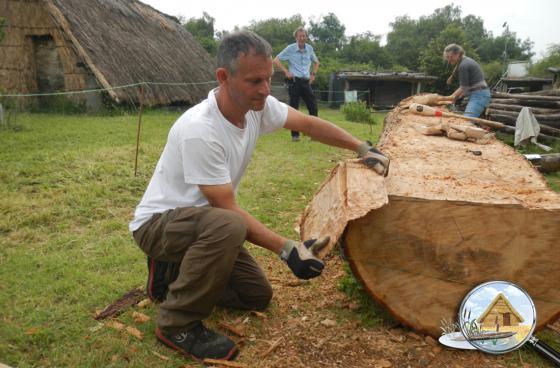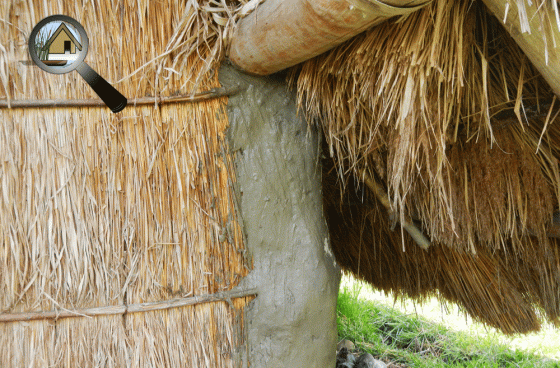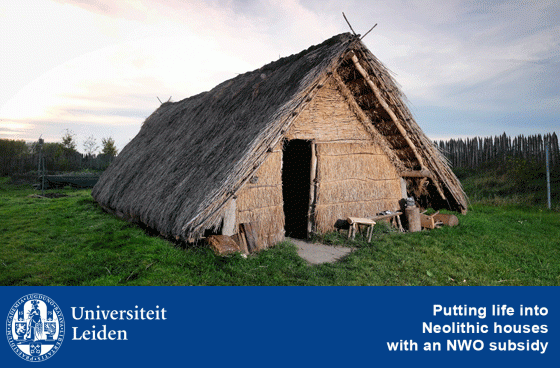Investigating domestic craft and subsistence activities through experiments and material analysis
In the years 2021-2025, Leiden University will be coordinating “Putting Life in Neolithic Houses”. EXARC is one of the partners. The other partners are: BIAX Consult Biological Archaeology & Environmental Reconstruction, Stichting LAB (Leids Archeospecialistisch Bureau), Woud en Beek, York University, Rijksdienst voor het Cultureel Erfgoed, Masamuda, Studio Kelvin Wilson, Het Stenen Tijdperk, and TGVideo. This project is funded by the Dutch Research Council NWO.
At Masamuda, a houseplan from the Neolithic Vlaardingen culture was reconstructed with help of Leiden University. Having constructed this house, how should we subsequently bring this to life? We know surprisingly little about the role of material culture and the activities tools and objects were involved in. In this project we will use a combination of experimental archaeology, microwear and residue analysis to enrich our knowledge about daily life in the Vlaardingen period. This project intends to perform a detailed biographical analysis of objects from a cross-craft perspective: can we detect toolkits composed of different objects made of different materials, involved in one specific activity?
In a series of workshops, volunteers of Masamuda will carry out various experiments related to daily life in the Vlaardingen period. In doing so, they will be actively involved in the furnishing of the house, and in the tasks that will be carried out in and around the house and in the surrounding landscape.
This project is funded by the Dutch Research Council NWO (AIB.19.020).

Many reconstructions in archaeological open-air museums look quite similar. However, providing more detailed stories in displays, text, and images, is essential. We will therefore involve two illustrators to translate the scientific findings into evocative images. The juxtaposition of two different reconstructions of the same data will be published with EXARC asking for comments, suggestions, and critique. These will subsequently be incorporated in new experiments and a new look at our scientific observations. It is this constant dialogue between scientific analysis, experimentation, evocative images, and the public, that forms the innovative core of this project and that will hopefully push the limits of our imagination.

Investigating domestic craft and subsistence activities through experiments and material analysis
Public participation in archaeological projects is becoming ever more essential and experimental archaeology is an excellent way of reaching out: doing things together and exploring the various technological choices of the past creates a scientific community in which both scientists and the general public can benefit. This approach has been fundamental to the reconstruction of a houseplan from the Neolithic Vlaardingen culture in the Vlaardingen-Broekpolder, an initiative of the Federatie Broekpolder (see video). This reconstruction was based on a houseplan from Haamstede-Brabers and forms part of the open-air museum of Masamuda (www.masamuda.nl). The Vlaardingen culture (VLC) refers to Neolithic sites which are for the most part located in the Rhine/Meuse delta, have thick-walled, quartz-tempered pottery with S-shaped profiles. The sites are characterized by a diversity in location, subsistence base and choice of flint... Read more ↓
Public participation in archaeological projects is becoming ever more essential and experimental archaeology is an excellent way of reaching out: doing things together and exploring the various technological choices of the past creates a scientific community in which both scientists and the general public can benefit. This approach has been fundamental to the reconstruction of a houseplan from the Neolithic Vlaardingen culture in the Vlaardingen-Broekpolder, an initiative of the Federatie Broekpolder (see video). This reconstruction was based on a houseplan from Haamstede-Brabers and forms part of the open-air museum of Masamuda (www.masamuda.nl). The Vlaardingen culture (VLC) refers to Neolithic sites which are for the most part located in the Rhine/Meuse delta, have thick-walled, quartz-tempered pottery with S-shaped profiles. The sites are characterized by a diversity in location, subsistence base and choice of flint.
Having constructed the Vlaardingencultuurhuis (VLH), how should we subsequently “bring this house to life”? What did people actually do in and around these houses, which crafts did they carry out, how did they obtain and process their food and which toolkits were involved in these daily activities? How did they move around the landscape to collect resources? Although we know much about the plants used and the animals consumed during the Vlaardingen period, we know surprisingly little about the role of material culture and the activities tools and objects were involved in. In this project we will use a combination of experimental archaeology, microwear and residue analysis to enrich our knowledge about daily life in the VL period. We will involve the volunteers of Masamuda in this endeavour and communicate our findings to the wider world of experimenters, re-enactors, and general public through the social media of EXARC in order to elicit a continuing dialogue. Our research will focus on the VL sites located in the Rhine/Meuse delta (the coastal dunes, intertidal levees, and river dunes), referring to the VL sites further east only for comparison.
Microwear analysis has so far been applied mostly to VL flint tools. Recently, a number of VL sites has been excavated, but only limited samples were studied microscopically. Implements made of bone, antler, stone, and wood have only been cursorily examined for traces of production and wear. This project intends to perform a detailed biographical analysis of these objects from a cross-craft perspective: can we detect toolkits composed of different objects made of different materials, involved in one specific activity? To push the limits of “traditional” microwear analysis, which mostly makes use of stereo- and metallographic microscopy, we will use SEM/EDX, multispectral imaging and confocal laser microscopy to detect subtle textural differences in the wear traces observed. Detailed microwear analysis, involving these largely unexplored technical approaches, thus gives us insight into the invisible aspects of past technological systems, those involving organic materials like skin, plant fibers, wool, but also wood, bone, and antler where such materials have not been preserved.
Detecting traces of manufacture and use on VL tools is, however, only one aspect of the search for daily life of the Vlaardingen people. Experiments are an integral part of this exploration and in fact microwear analysis is entirely reliant on an appropriate experimental reference collection. In a series of workshops, taught and coordinated by experienced (Stone Age) craftspeople, volunteers of Masamuda will carry out various experiments related to daily life in the Vlaardingen period. In doing so, they will be actively involved in the furnishing of the VCH, and in the tasks that will be carried out in and around the house and in the surrounding landscape. The tools they will use will be as much as possible replicas of known objects from the VL period.
To obtain insight into VL culinary practices, a selection of pottery will be studied for the presence of organic residue. Food residues, which are often encrusted on ceramics, provide an optimal source of information about how people prepared their daily meals, what foods were cooked, and which pots were used for what kind of foods. The technique which combines scanning electron microscopy (SEM) with chemical organic residue analysis (ORA) proved to be a successful approach in identifying original vessel contents. Each discipline uses its own highly sensitive method to identify information left in archaeological crusts. The findings will form a departure point for further experiments with food preparation by the Masamuda volunteers.
Unfortunately, despite the ever-growing body of scientific data about the past, we actually know very little about past techniques and processes and are limited by the analogies at our disposal, which are derived either from our own experience or from our knowledge of ethnohistory and ethnography. This is an important limiting factor in carrying out experiments. Consequently, many reconstructions in archaeological theme parks look quite similar, both in their construction (the use of wooden posts and beams, roofs of reeds, walls plastered with loam) and in the choice of depicted activities inside and in the surrounding yards and landscape. However, the public visiting (open-air) museums is asking ever more specific questions about daily life in the past. Providing more detailed stories of daily activities in displays, text and images, is essential. We will therefore involve two illustrators to translate our scientific findings into evocative images. The juxtaposition of two different reconstructions of the same data will be published on the social media and open access journal of EXARC asking for comments, suggestions and critique from the many users of this platform (e.g. professional experimenters, visitors of open-air museums). These will subsequently be incorporated in new experiments and a new look at our scientific observations. It is this constant dialogue between scientific analysis, experimentation, evocative images and the public, that forms the innovative core of this project and that will hopefully push the limits of our imagination.
In recent years a considerable number of VL sites have been excavated. As it concerns mostly rescue excavations, funding was often limited, and usually only restricted samples of finds were microscopically studied, if at all. Basic data on these sites is available in find reports. Our project will collect these scattered data on material culture from a comparative perspective. Having one person looking at flint raw material variability and flint tool biographies in the various VLC flint assemblages, in conjunction with a technological and functional analysis of the other categories of material culture, will reveal the technological choices made at the different VL sites and the character of their connections. The relationship between VL sites at the landscape scale will therefore be a last focus of this project. We will attempt to understand the landscape as part of the technological system, including logistical devices and physical infrastructural facilities, and [b] as an integral part of the maritime cultural landscape that connects water and land in the context of movement, human subsistence and social interaction. Which resources did they use and where could they obtain these? This is especially relevant in the light of the toolkits, which require planning to make and maintain in terms of the required raw materials. Could there have been any conflicts between the various subsistence and craft activities in terms of time/space restrictions? How did they move around in this water-rich landscape to obtain those resources? Close more ↑

Making a dugout canoe - big project for 2021, to be made by the Masamuda boat builders
The major project for 2021 is the making of a dugout canoe. At the end of May a huge 6,5 meter long oak trunk was delivered at the Vlaardingen house. Over the summer volunteers of the Masamuda center will turn this trunk into a canoe with which we will explore the waters around Vlaardingen. A literature search by Caroline Vermeeren and Kirsti Hänninen showed that Quercus was regularly used in the Neolithic for making canoes. More importantly, a canoe fragment of oak had been found at the Hazendonk, a site with Vlaardingen levels. Diederik Pomstra made several polished flint axes of the Buren type, which were documented microscopically before being put to use. This way we would be able to follow the development of the wear traces on such a newly made axe.





